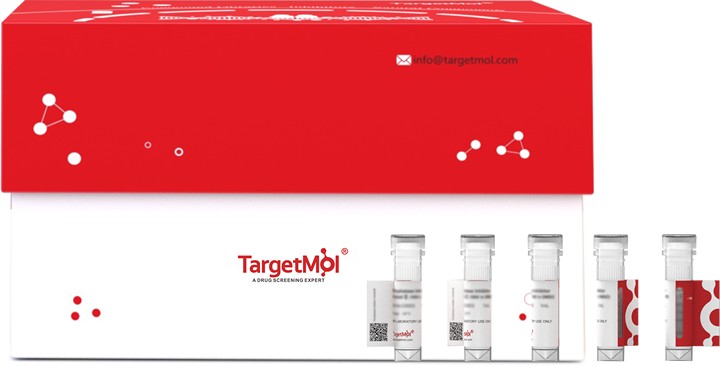- 全部删除
 您的购物车当前为空
您的购物车当前为空
CD300A Protein, Human, Recombinant (hFc & His)
CD300A is a single-pass type I membrane protein which belongs to the CD300 family. It contains 1 Ig-like V-type (immunoglobulin-like) domain. The CD300 family of myeloid immunoglobulin receptors includes activating (CD300b, CD300e) and inhibitory members (CD300a, CD300f), as well as molecules presenting a negative charge within their transmembrane domain (CD300c, CD300d). It is expressed not only by natural killer (NK) cells but also by T-cell subsets, B-cells, dendritic cells, mast cells, granulocytes and monocytes. CD300A is an inhibitory receptor which may contribute to the down-regulation of cytolytic activity in natural killer (NK) cells, and to the down-regulation of mast cell degranulation. CD300c is a functional immune receptor able to deliver activating signals upon ligation in RBL-2H3 mast cells.

CD300A Protein, Human, Recombinant (hFc & His)
| 规格 | 价格 | 库存 | 数量 |
|---|---|---|---|
| 10 μg | ¥ 740 | 5日内发货 | |
| 50 μg | ¥ 1,970 | 5日内发货 | |
| 500 μg | ¥ 12,100 | 5日内发货 | |
| 1 mg | ¥ 17,400 | 5日内发货 |
产品信息
| 生物活性 | Activity has not been tested. It is theoretically active, but we cannot guarantee it. If you require protein activity, we recommend choosing the eukaryotic expression version first. |
| 产品描述 | CD300A is a single-pass type I membrane protein which belongs to the CD300 family. It contains 1 Ig-like V-type (immunoglobulin-like) domain. The CD300 family of myeloid immunoglobulin receptors includes activating (CD300b, CD300e) and inhibitory members (CD300a, CD300f), as well as molecules presenting a negative charge within their transmembrane domain (CD300c, CD300d). It is expressed not only by natural killer (NK) cells but also by T-cell subsets, B-cells, dendritic cells, mast cells, granulocytes and monocytes. CD300A is an inhibitory receptor which may contribute to the down-regulation of cytolytic activity in natural killer (NK) cells, and to the down-regulation of mast cell degranulation. CD300c is a functional immune receptor able to deliver activating signals upon ligation in RBL-2H3 mast cells. |
| 种属 | Human |
| 表达系统 | HEK293 Cells |
| 标签 | C-hFc-6xHis |
| 蛋白编号 | Q9UGN4 |
| 别名 | NK inhibitory receptor,IRC1/IRC2,Inhibitory receptor protein 60,Immunoglobulin superfamily member 12,CMRF35-like molecule 8,CMRF-35-H9,CMRF35-H,CD300 antigen-like family member A |
| 氨基酸序列 | Leu18-Gln178 |
| 蛋白构建 | Leu18-Gln178 |
| 蛋白纯度 | Greater than 95% as determined by reducing SDS-PAGE. (QC verified) |
| 分子量 | 60-75 KDa (reducing condition) |
| 内毒素 | < 0.1 ng/µg (1 EU/µg) as determined by LAL test. |
| 缓冲液 | Lyophilized from a solution filtered through a 0.22 μm filter, containing 20 mM Tris-HCl, 150 mM NaCl, 5% Trehalose, pH 8.0. |
| 复溶方法 | Reconstitute the lyophilized protein in distilled water. The product concentration should not be less than 100 μg/ml. Before opening, centrifuge the tube to collect powder at the bottom. After adding the reconstitution buffer, avoid vortexing or pipetting for mixing. |
| 存储 | Lyophilized powders can be stably stored for over 12 months, while liquid products can be stored for 6-12 months at -80°C. For reconstituted protein solutions, the solution can be stored at -20°C to -80°C for at least 3 months. Please avoid multiple freeze-thaw cycles and store products in aliquots. |
| 运输方式 | In general, Lyophilized powders are shipping with blue ice. Solutions are shipping with dry ice. |
| 研究背景 | CD300A is a single-pass type I membrane protein which belongs to the CD300 family. It contains 1 Ig-like V-type (immunoglobulin-like) domain. The CD300 family of myeloid immunoglobulin receptors includes activating (CD300b, CD300e) and inhibitory members (CD300a, CD300f), as well as molecules presenting a negative charge within their transmembrane domain (CD300c, CD300d). It is expressed not only by natural killer (NK) cells but also by T-cell subsets, B-cells, dendritic cells, mast cells, granulocytes and monocytes. CD300A is an inhibitory receptor which may contribute to the down-regulation of cytolytic activity in natural killer (NK) cells, and to the down-regulation of mast cell degranulation. CD300c is a functional immune receptor able to deliver activating signals upon ligation in RBL-2H3 mast cells. |




